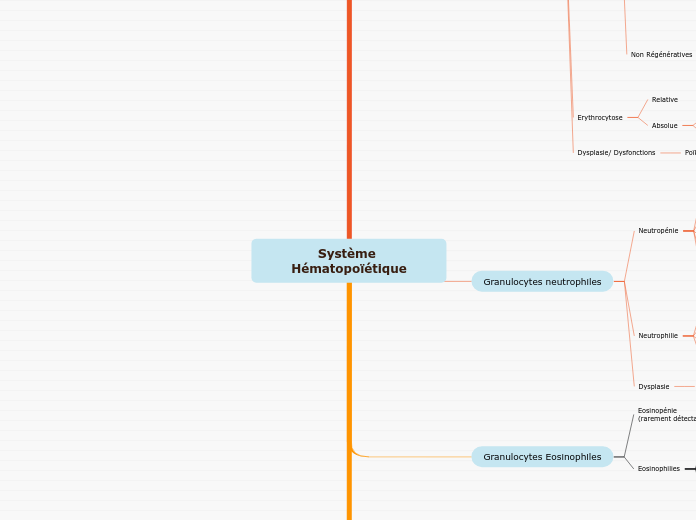by Marla Teecy 4 years ago
273
Système Hématopoïétique

by Marla Teecy 4 years ago
273

More like this

To name your story, you have to think about the overall message and what you want your audience to understand from the story. Also, make it relevant and easy to remember.
Thrombocytose essentielle
Néoplasmes
Endocrinopathies
hémorragies
Déficiences en fer
Infections
Congestion splénique
Auto-immun (CN)
autoimmun
infections
Tumeurs
Radiations
...
Aplasie thymique
Immunodéficiences héréditaires
The ending of a story is essential. We all know that if the ending is weak, what happened before loses its importance. So make it unpredictable, but fair. A resolved ending answers all the questions and ties up any loose threads from the plot.
The middle of the story is where you add layers of complications that will lead to the end. Reveal more about the character's journey. Did their personality go through changes? How did they overcome the challenges? And as you build up the story’s central conflict, make it more personal to that character. Also, from the middle act, you have to lead into the final act.
Pancytopénie aplastique
Tumeurs des lignées hématopoïétiques
Déficits nutritionnels: Anémie ferriprive
Associée à une maladie chronique
Hémolyses Intra/ Extravasculaires
Causes non biologiques
Immunitaires
Erythrolyse Idiopathique
iroérythrolyse Néonatale
Toxiques
Propylène glycol, Quinine, Venins de serpent
Oignons/Ail
Cuivre et Zinc
Défauts métaboliques (héréditaire/ Familial)
Déficience en phosphofructokinase
Déficience en pyruvate kinase
Protoporphyrie
Porphyrie
Causes Biologiques
Protozoaires
Trypanosomoses
Babésioses
Bactéries
Anaplasmose
Leptospirose
hémobartonellose
Virus
Anémie infectieuse équine
Hémorragies
Tumeurs Gastro-intestinales (vieux anx)
Thrombocytopénies auto-immunes
Verminoses gastro-intestinales sévères (Ankylostomose, Haemonchose)
Infestation sévère par les tiques
Puliculose sévère
Pédiculose bovine
Ulcères
Interne/ externe
Aigue, chronique, récurrente
In the beginning of the story (or the exposition), you will need to introduce the setting and characters. You might also want to introduce the main conflict. This part of the story is important because it gives the reader necessary background information and maybe even a first insight into a character’s personality.
Hyperplasie nodulaire de la rate du vieux Cn
certaines tumeurs ou infl
hypoxémie /ex